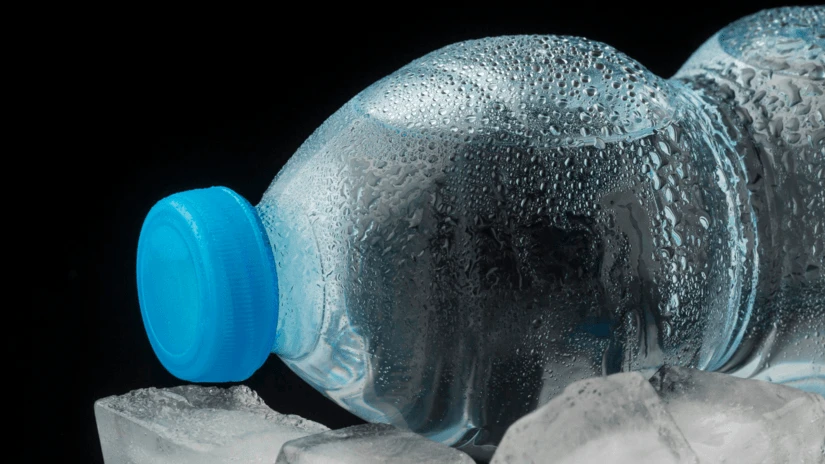This Simple Trick Can Keep Your Home Cool This Summer

As Europe grapples with increasingly frequent and intense heatwaves, staying cool at home is no longer just about comfort—it's becoming a necessity. While Ireland is yet to experience anything like the temperatures seen on the continent, more and more Irish households are finding themselves struggling with the ever-increasing summer heat. Fortunately, the Spanish have perfected a remarkably simple and cost-effective solution: a basic water bottle trick that can help you keep cool at home, sleep comfortably at night and avoid wasting money on air conditioning.
How Can I Keep Cool Without Air Conditioning?
It might seem too simple to be true, but it's all based on a basic scientific principle.
In southern Spain, where temperatures consistently exceed 40 °C, people use frozen water bottles as a natural cooling method for rooms.
What Do I Need?
- Fill a plastic bottle about 75% with water (be careful, don't fill it to the top – water expands when frozen).
- Add some table salt to the bottle.
- Put it in the freezer until it turns into ice.
- Place the frozen bottle in a higher spot in the room (e.g., on a shelf) and put a bowl or tray underneath to catch the condensation.
The colder, denser air will gradually sink to the floor, pushing the warm air upwards. The latter will then pass by the bottle again, cool down, and restart the cycle.
The result? The temperature drops, slowly but constantly.
Why Add Salt to the Water?
Salted water has a lower freezing temperature than non-salted water, meaning the ice formed will be even colder and therefore, will further add to the cooling effect of the frozen bottle.
What is the Scientific Principle Behind It?
Ice absorbs about 334 kJ/kg of heat when it melts, when it melts, without changing its temperature, thus absorbing thermal energy from the surrounding air.
In addition, water's high thermal capacity of water (4.18 kJ/kg °C) allows it to retain a lot of heat, constantly cooling the room.
The colder, denser air near the bottle sinks, while the warm air rises, cools upon contact with the ice, and re-enters the circuit, creating continuous passive cooling.
In essence, the ice soaks up heat as it melts, and the naturally moving air spreads that coolness around.
Your Fan Can Become a Portable Air Conditioner
Want an even stronger effect? Combine the bottle with a fan – and you get a truly effective mini-cooling system.
How does it work?
- Place the frozen bottle of water in front of a fan.
- As the air from the fan moves across the frozen bottle, it moves the cold air around the room.
- This will help to distribute the cooled air around the room.
Scientific principle
The fan increases the speed of the air passing over the ice, significantly enhancing heat exchange compared to natural convection.
Warm air constantly reaches the cold surface, preventing the formation of a stagnant air layer, cools rapidly, and is then diffused into the room.
Are There Other Ways to Keep My Home Cool?
The water bottle trick is a quick and cheap solution, but its effects are truly felt only if you integrate it into a complete home cooling strategy.
Here's what else you can do:
| Day | Night | All the time |
|---|---|---|
| Keep windows and blinds closed | Create air currents | Use the bottle with a fan |
| Use light-colored curtains | Hang a wet sheet at the window | Turn off heat sources (TV, PC) |
During the day
Solution: Keep windows, blinds, and curtains closed, especially on the sunny side.
Potential savings:
- Heat loss through direct solar radiation can account for 20-30% of a room's overheating.
- Estimated savings: 5–10% on cooling / energy costs for fan or AC.
Solution: Choose light-coloured curtains – they reflect solar rays better.
Potential savings:
- Reflect up to 80% of solar radiation, compared to some dark materials that absorb it.
- Additional savings: 2–5%.
Solution: Avoid using the oven or electric stove. Save the stuffed cabbage rolls for cooler days.
Potential savings:
- A cooking session with the oven can raise the room temperature by 1–2 °C.
- Compensating for this heat with a fan or AC can consume energy.
- Estimated savings: 3–7% of cooling consumption.
During the night
Solution: Open windows wide to create air currents that remove accumulated heat.
Potential savings:
- Natural ventilation can reduce indoor temperature by 1–3 °C.
- Reduces the need for a fan/AC at night.
- Estimated savings: 5–10%.
Solution: Hang a wet sheet in front of an open window – evaporation cools the incoming air. Yes, the Romans knew what they were doing.
Potential savings:
- Increases the cooling effect by up to 1 °C in the immediate area.
- Local savings: 1–3%.
Throughout the day
Solution: Combine the ice bottle with the fan for localized cooling.
Potential savings:
- Can replace an air conditioner for a small room.
- Significant savings: 10–20% if you avoid using air conditioning.
Solution: Unplug electronics you're not using – even on standby, they unnecessarily heat up the room.
Potential savings:
- Passive consumption of 5–10 W per device, but also heating.
- Can lower room temperature by 0.2–0.5 °C in total.
- Indirect savings: 1–3%.
🔢Total savings
- Minimum realistic savings: 10–15%
- Maximum realistic savings: 25–35% (if you completely replace AC with passive methods).
Looking For Other Ways to Reduce Your Energy Bill?
Stay up to date with the latest news from Selectra to learn how to lower your energy bills or find a cheaper electricity provider.
How Long Does the Cooling Effect Last?
Depending on room insulation and ambient temperature, the ice can last between 2 and 6 hours. In very hot spaces or with forced ventilation, the ice will melt faster.
How Much Can the Room Temperature Drop?
Theoretically, a 2 L bottle of frozen water can absorb the equivalent of about 11 °C of cooling in a 20 m2 room. In practice, due to thermal losses, you will get approximately 3–5 °C difference.
How Do I Add the Fan for More Efficiency?
Place the fan to blow directly over the frozen bottle. Forced convection will accelerate heat exchange, cooling the air faster. Be aware, however: the ice will melt more quickly.
